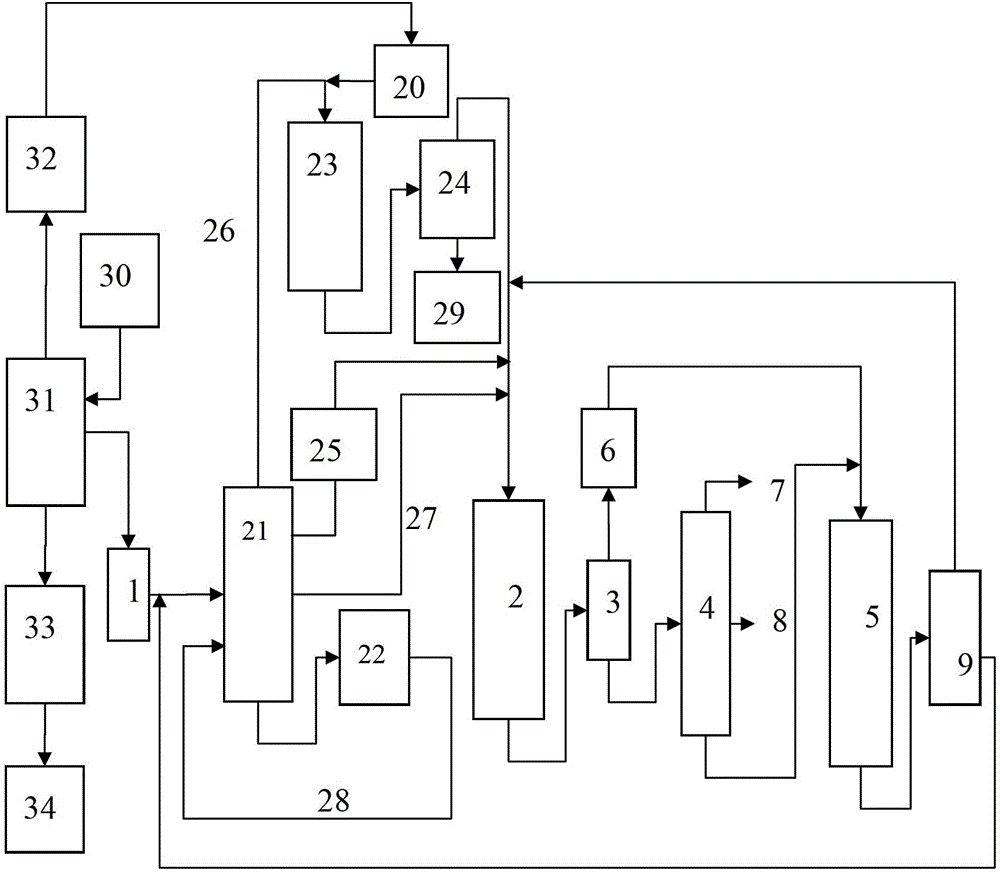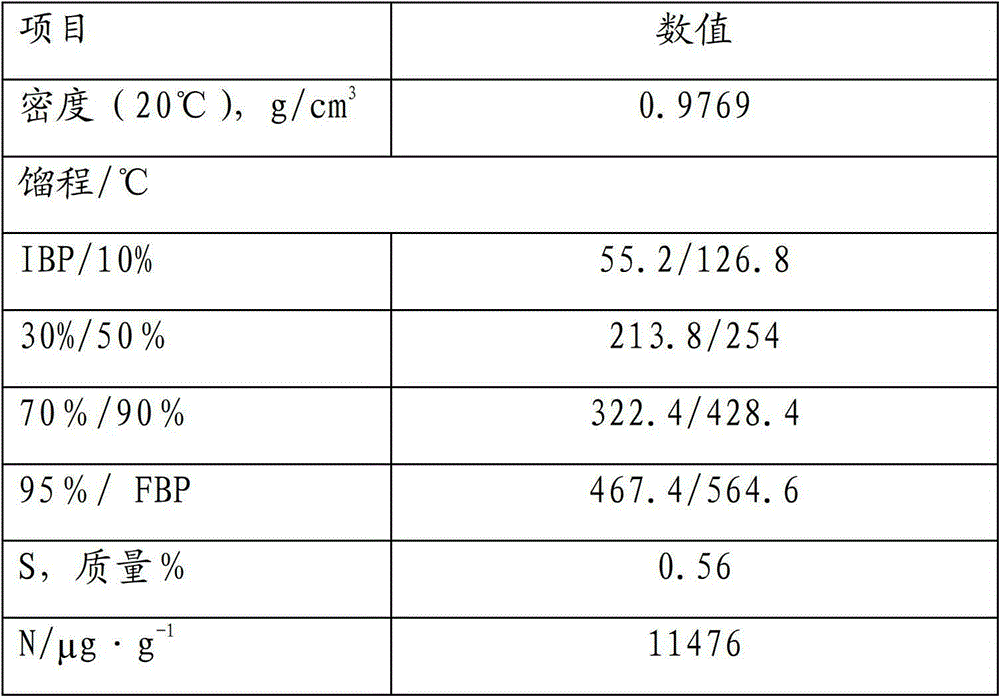Deep processing method of non-caking coal or feebly caking coal
A technology of weakly caking coal and caking coal, applied in the field of coal chemical industry, can solve the problems of short operation period and not involving the utilization rate of coking heavy distillate oil
- Summary
- Abstract
- Description
- Claims
- Application Information
AI Technical Summary
Problems solved by technology
Method used
Image
Examples
Embodiment 1
[0066] Nanning lignite is sent to a fluidized bed carbonization reactor for carbonization reaction at a pressure of 0.1MPa and an operating temperature of 500°C to generate gas, coal tar and semi-coke. The properties of coal tar are shown in Table 1. After the gas is purified, it enters the pressure swing adsorption device, passes through the adsorption bed layer composed of zeolite molecular sieve, etc., and the operating pressure is 2MPa, and the hydrogen gas in it is extracted, and the carbon monoxide component in it is also reacted with water to generate Hydrogen is obtained, together with the hydrogen produced by coal dry distillation, the pressure swing adsorption technology is used to propose the feed for the coal tar hydrogenation unit. The semi-coke is sent to the fluidized bed gas generator, where it reacts with oxygen and water vapor to produce synthesis gas and coal ash. When the semi-coke is gasified, the semi-coke reacts with oxygen and water vapor (the volume r...
Embodiment 2
[0073] The Yilan coal is sent to a medium fluidized bed carbonization reactor for carbonization reaction, the pressure is 0.12MPa, and the operating temperature is 600°C to generate gas, coal tar and semi-coke. The properties of coal tar are shown in Table 2. After the gas is purified by dry distillation, it enters the pressure swing adsorption device, passes through the adsorption bed composed of silica gel, etc., and the operating pressure is 2.45MPa, and the hydrogen gas in it is extracted, and the carbon monoxide component in it is also reacted with water by medium-range technology Hydrogen is generated, and together with the hydrogen from coal dry distillation, the pressure swing adsorption technology is used to propose the feed for the coal tar hydrogenation unit. The semi-coke is sent to the fluidized bed gas generator, where it reacts with oxygen and water vapor to produce synthesis gas and coal ash. When the semi-coke is gasified, the semi-coke reacts with oxygen and...
Embodiment 3
[0078] Same as in Example 2, the reaction temperature in the hydrotreating section is 350°C, and a hydrogenation protecting agent is used for pretreatment before the hydrotreating section. The hydrogenation protecting agent is a conventional hydrogenation protecting agent, with alumina as the carrier, containing molybdenum oxide %, cobalt oxide 1%, the pore volume is 0.82mL / g, and the specific surface area is 128M 2 / g. The treatment conditions of the hydrogenation protective agent are reaction temperature 310°C, pressure 15.1MPa, hydrogen oil volume ratio 1200:1 and liquid hourly volume space velocity 1.2h -1 . Others are identical with embodiment 2.
PUM
| Property | Measurement | Unit |
|---|---|---|
| boiling point | aaaaa | aaaaa |
| specific surface area | aaaaa | aaaaa |
| specific surface area | aaaaa | aaaaa |
Abstract
Description
Claims
Application Information
 Login to View More
Login to View More - R&D
- Intellectual Property
- Life Sciences
- Materials
- Tech Scout
- Unparalleled Data Quality
- Higher Quality Content
- 60% Fewer Hallucinations
Browse by: Latest US Patents, China's latest patents, Technical Efficacy Thesaurus, Application Domain, Technology Topic, Popular Technical Reports.
© 2025 PatSnap. All rights reserved.Legal|Privacy policy|Modern Slavery Act Transparency Statement|Sitemap|About US| Contact US: help@patsnap.com



